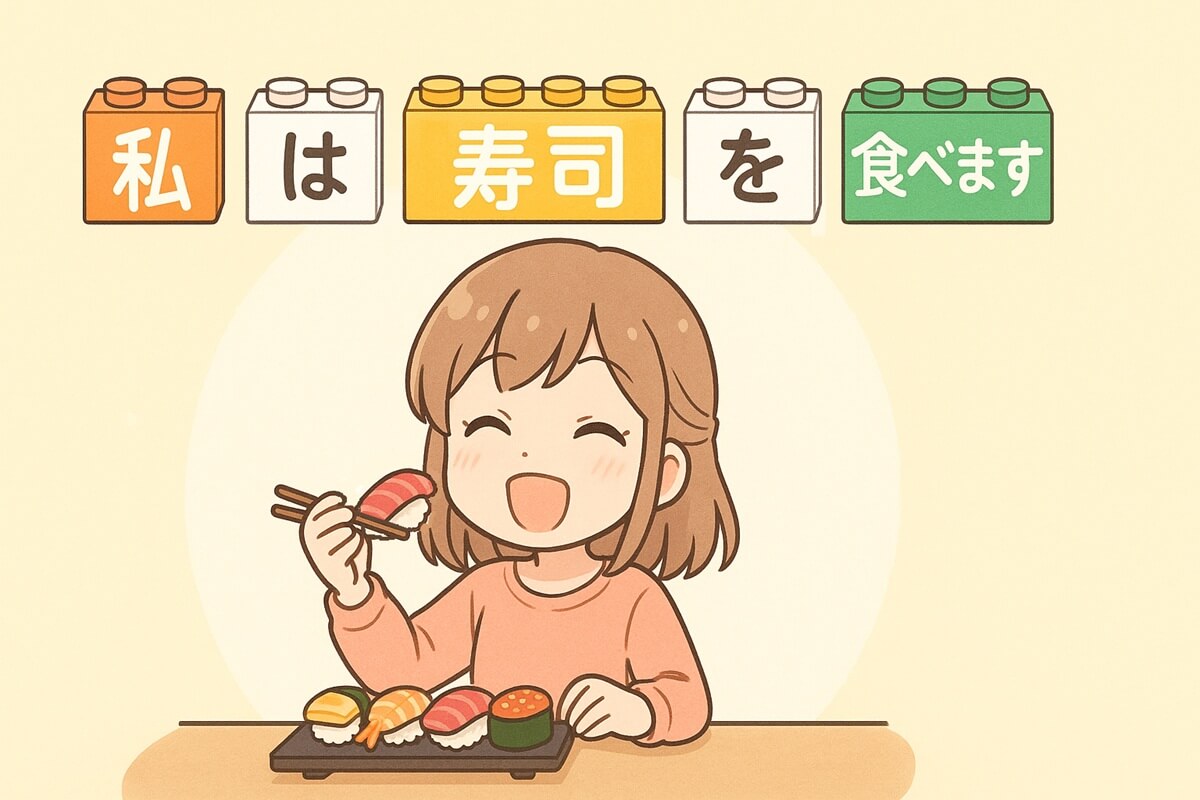
Japanese can look daunting at first—two alphabets, unfamiliar sounds, and a sentence structure that reverses English. But once you understand how it works, especially sentence structure and particles, everything begins to make sense.
Below is a simple explanation of Japanese sentence structure and the use of particles—the building blocks of speaking and understanding the language.
1. The Simple Sentence Order: SOV
English follows the Subject-Verb-Object (SVO) word order:
I eat sushi. (Subject - Verb - Object)
Japanese follows the Subject-Object-Verb (SOV) word order:
私は寿司を食べます。
Watashi wa sushi o tabemasu.
(I - sushi - eat)
The verb is always at the end. That’s the rule, and it’s rarely broken.
2. What Are Particles?
Particles are small words that show how each part of a sentence functions. They appear after the word they describe. They don’t have a direct equivalent in English, but they’re an essential part of Japanese grammar.
Think of particles like signs that show who is doing what, to whom, where, and when.
3. Basic Particles You Must Know
は (wa) — Topic Marker
Shows what the sentence is about. Note: It’s written as は, but pronounced wa when used as a particle.
私は学生です。
Watashi wa gakusei desu.
“As for me, I’m a student.”
が (ga) — Subject Marker
Emphasizes the subject, especially when introducing new or important information.
誰が来ますか?
Dare ga kimasu ka?
“Who is coming?”
を (o) — Direct Object Marker
Marks what the verb is acting upon.
パンを食べます。
Pan o tabemasu.
“I eat bread.”
に (ni) — Direction, Time, or Target
Shows where something goes or when it occurs.
学校に行きます。
Gakkou ni ikimasu.
“I go to school.”
6時に起きます。
Roku-ji ni okimasu.
“I wake up at 6.”
で (de) — Place of Action
Shows where an action happens.
図書館で勉強します。
Toshokan de benkyou shimasu.
“I study at the library.”
の (no) — Possession or Description
Indicates ownership or describes nouns.
彼の本
Kare no hon
“His book”
日本の文化
Nihon no bunka
“Japanese culture”
と (to) — “And” or “With”
Links nouns or shows companionship.
友達と話します。
Tomodachi to hanashimasu.
“I talk with my friend.”
4. Putting It All Together
Let’s break down a more complex sentence:
私は友達とレストランで昼ご飯を食べました。 Watashi wa tomodachi to resutoran de hirugohan o tabemashita. “I ate lunch with a friend at a restaurant.” 私は — As for me / topic 友達と — with a friend レストランで — at a restaurant 昼ご飯を — lunch / object 食べました — ate / verb
Every part has its own particle. That’s the power of Japanese sentence structure.
5. Final Tips for Mastering Japanese Sentences
- Don’t skip particles—they are essential.
- Start with simple S–O–V sentences and add details as you learn.
- Practice spotting patterns in native materials (anime, news, manga).
- Study particles in context, not in isolation.
TL;DR
- Japanese uses Subject–Object–Verb (SOV) word order.
- Particles show how each word functions in the sentence.
- Knowing just a few particles will unlock most simple sentences.
Learning Japanese sentence structure is like building with Lego—once you know the pieces (particles), you can build anything.



